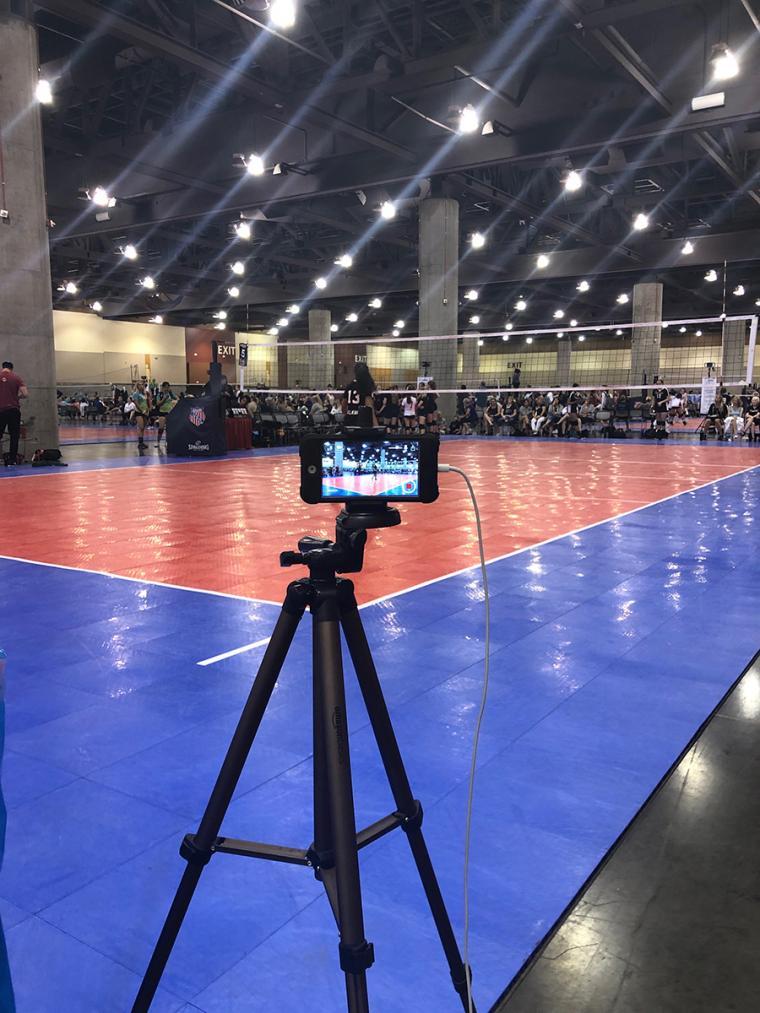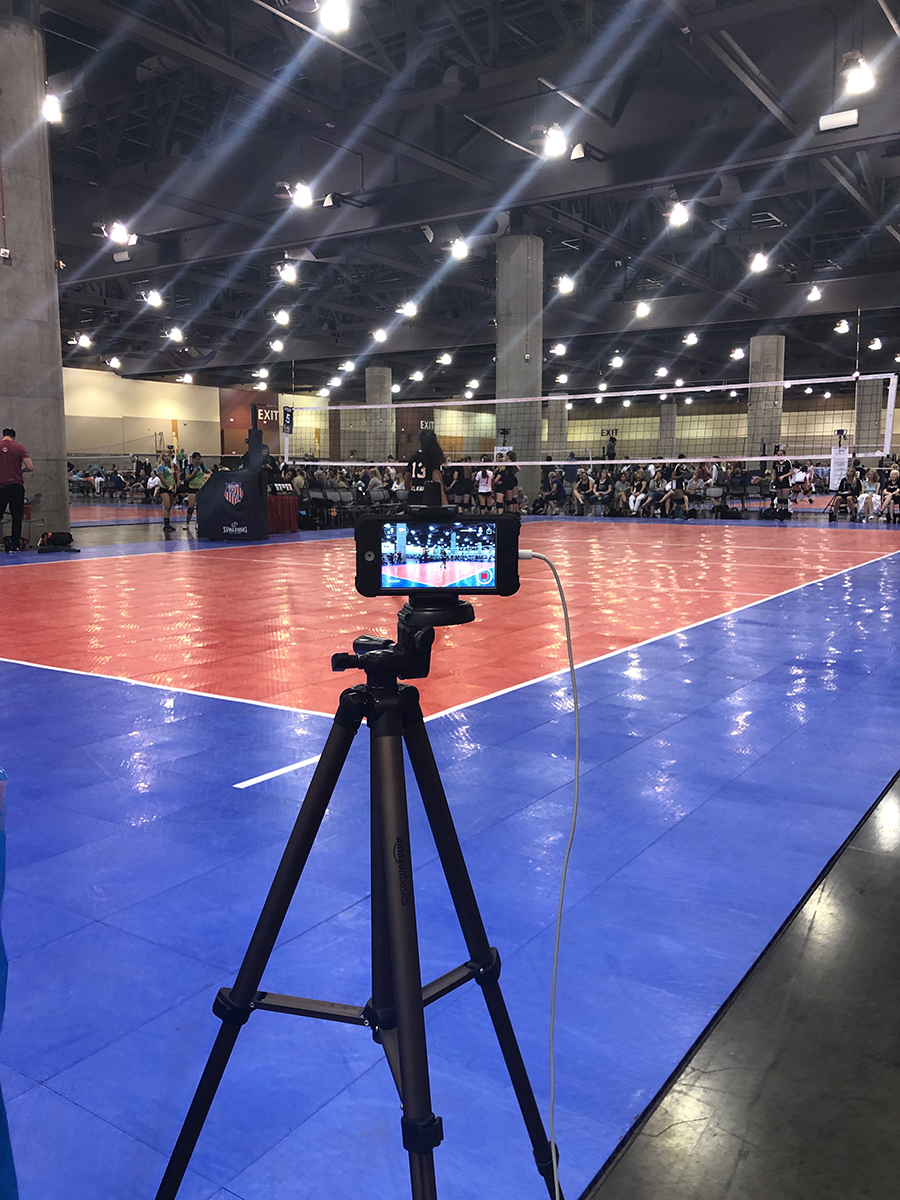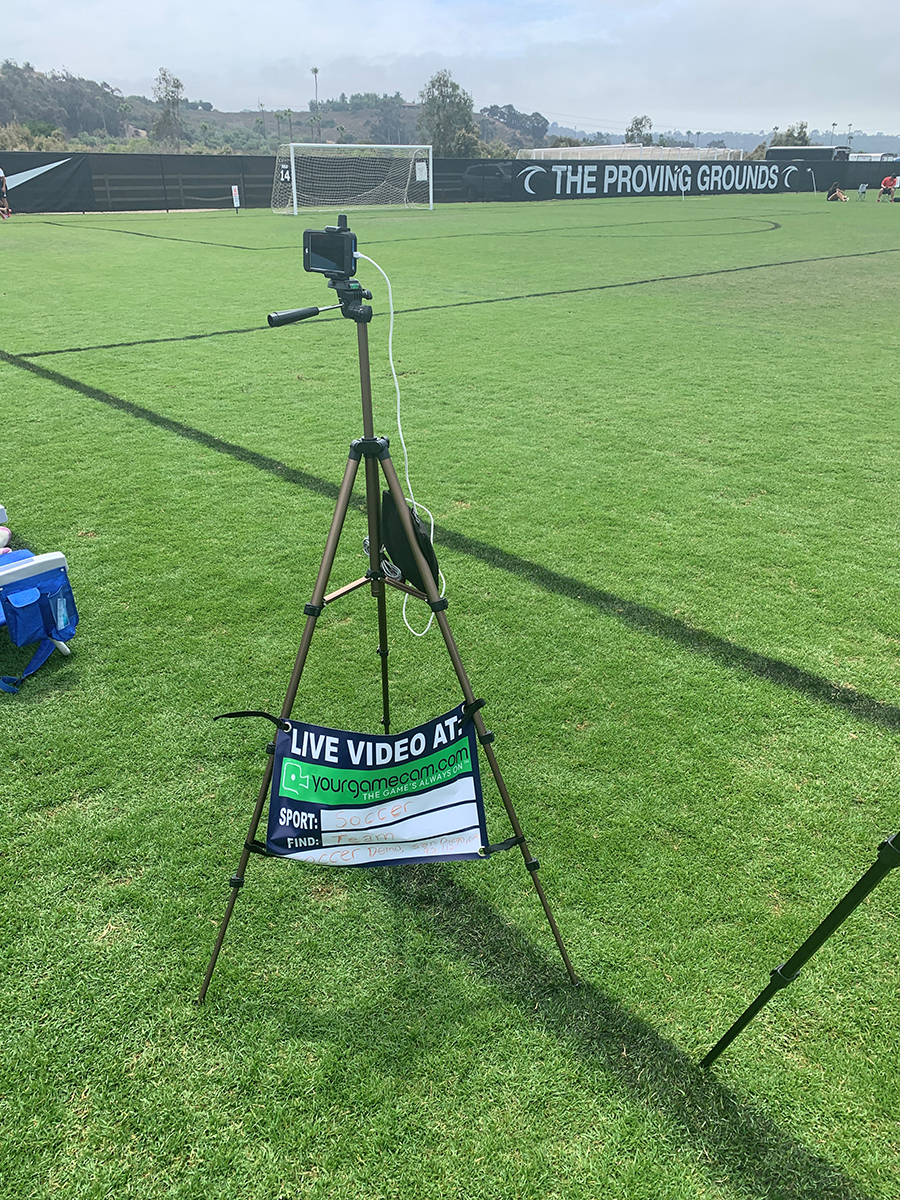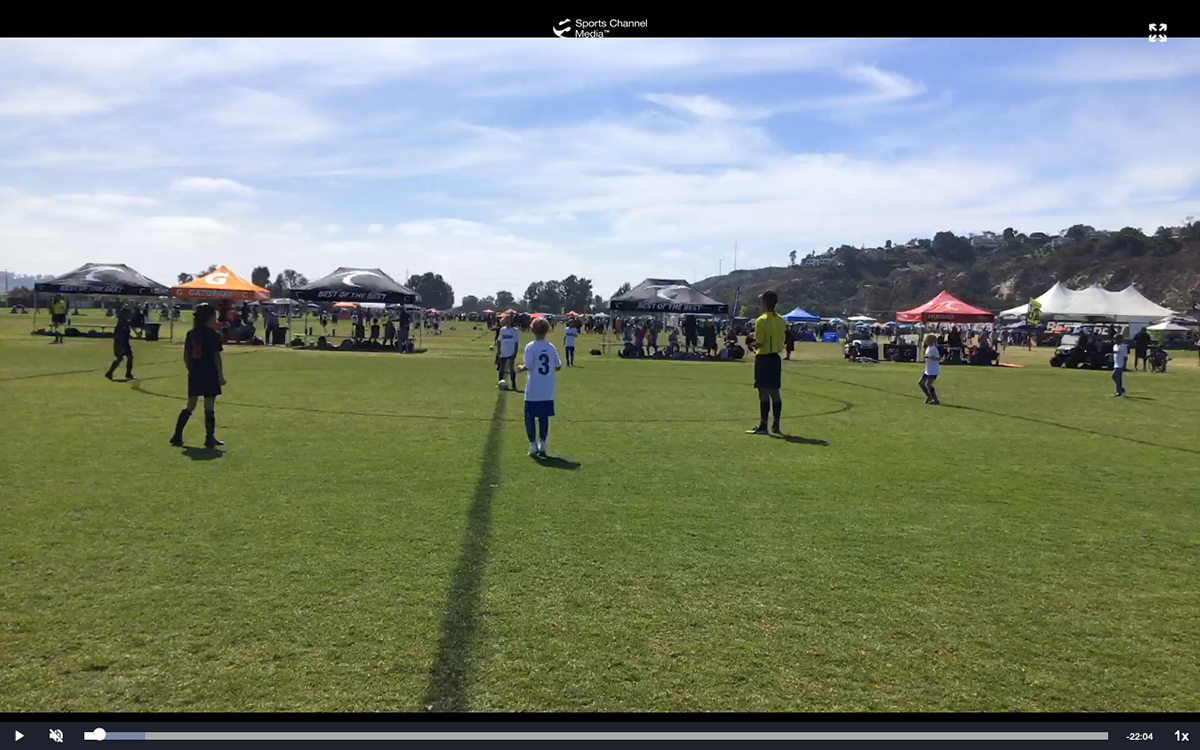

Live streaming provides fans who cannot be in attendance an opportunity to show their support and share in the memorable moments of those participating in an event. From parents spread thin between kids’ sporting events and those stuck at work, live streaming and recording games allows for those on the field to know their efforts are recognized. The feedback has been endless from our users who are thrilled to have the opportunity to share these priceless moments with a non-attending grandparent or other out of town family members. Sports are about friends, family, and the connections made surrounding those experiences.
So what does it take to live stream? That’s the question that might be on your mind right now. The basic equipment requirements are a camera, Internet access and power. There are essentially two options for live streaming an event: fixed camera installations and mobile streaming solutions. There are some key questions that should be asked by any prospective publisher to ensure their needs are truly being met. Don’t be shy in doing your research, as very few services offer month to month options and oftentimes are looking to secure two- to three-year contracts.
What is their privacy policy and how can the streamed content be monitored?
This is the most important question to ask in order to ensure the protection of all athletes involved. Whether you are looking to acquire fixed cameras or become a mobile publisher, it is essential to have the ability to monitor who can access and distribute the streamed content.
Knowing that your experience and that of those participating is safeguarded will provide you with confidence in your decision. Knowing that the live stream service provider is ready to act on your behalf is crucial. For example, in the event that a user or participant wants a video removed, how quickly can it be done and what are the steps for doing so?
 What does it cost to stream events at my facility?
What does it cost to stream events at my facility?
There are two models that are widely used throughout the live streaming industry: customer owned and turnkey. Customer owned requires the facility or tournament organizer to purchase the cameras, housing units and the hardware that is required for installation. The live stream service providers will either install the equipment for you or they will put you in contact with a local contractor who will handle the installation. Customer owned arrangements provide the best return on investment, providing 40 percent to 100 percent of the profits generated from ad revenue or subscriptions.
The turnkey models, by contrast, imply that the live stream vendor will provide the cameras, hardware, additional equipment and installation. In both models, you are responsible for providing or upgrading Internet access to support the anticipated bandwidth requirements. With turnkey models, your facility will likely receive minimal compensation from the vendor. The compensation varies by provider but typically ranges from zero to 30 percent.
With both models, you should ask yourself the following: is the service looking to build your brand or their brand? Some live stream services will require you to provide links to their website, pulling users away from your platform. This is unfortunate, as you are the one who organized the event and attracted all of the viewers.
 Some providers offer white labeling or embedding so that your brand remains in front of the viewers at all times. Embedding means that they will provide you with an HTML code to place on either a new or existing page on your website. This code displays the video content through an iframe and keeps users on your site, consequently improving your own site analytics.
Some providers offer white labeling or embedding so that your brand remains in front of the viewers at all times. Embedding means that they will provide you with an HTML code to place on either a new or existing page on your website. This code displays the video content through an iframe and keeps users on your site, consequently improving your own site analytics.
With a white labeled offering, you are taking the platform and essentially wrapping your brand around their product or platform. This often occurs through the use of a subdomain such as watch.yourbrand.com. Alternatively, you can create a new branded domain specifically for live streaming purposes, such as yourbrand.tv or yourbrand.media.
What does it cost to live stream as a mobile publisher?
A mobile publisher typically incurs the least amount of upfront expenses. There are only a few services that currently offer mobile live stream options and all but one will require you to implement a pay-per-view model. The beauty of using a mobile publishing platform is that you are not restricted to a particular site or venue. This is a great option for leagues, tournament organizers or teams who rarely use the same location for their events.
Most, but not all services support Apple devices, Android mobile devices, Yi4k Action Cameras and GoPro. The options for service providers are often confined by which device you choose to use and your experience is often dependent on the quality of that device. For example, GoPros stream at 720p and will overheat rather quickly in weather that is above 100 degrees Fahrenheit. The YI4k Action camera is $100 less and will allow you to stream at 1080p and can withstand temperatures up to 114 degrees Fahrenheit but the availability of this device often fluctuates with demand. You can also stream using a handheld camera, but such devices will typically require a video mixer or encoder to stream effectively.
As a mobile publisher, your Internet connection and data plan are very important for two reasons. First, the quality of the Internet connection directly impacts the quality of the video itself. A poor Internet connection will produce breaks or lag in the video being displayed and can potentially ruin the experience for viewers. Second, the data plan and provider will determine the volume of streaming time available as well as the strength of the network that supports you. When using data plan providers or streaming in remote locations, there is little that can be done to avoid the occasional low-grade signal strength.
 What is the cost of the service for viewers?
What is the cost of the service for viewers?
A free viewership model embodies the spirit of youth and amateur sports by providing unrestricted access to both live and recorded events. Making this experience easily accessible for fans is guaranteed to make your channel a fan favorite and it will increase your number of viewers by event. Ideally, the videos allow families to share proud performances of their athletes and help fans feel like they were a part of the moment. Fundraising and sponsorships are a couple of the many creative ways to offset the initial costs of the service.
Many live streaming services require viewers to pay either a daily, weekly, monthly or annual subscription in order to access live content or replay past events. This can impact your viewership by up to 70 percent but can also provide an additional revenue stream for your tournament organization or facility. If you choose to charge viewers for access to the live content, ask how much, if any, of that profit will be shared with you.
Recording and streaming is a new undertaking for many event owners, and it is understandable if you have plenty of questions. Just be sure to ask them up-front so that your final decision reflects the arrangement that is right for you. SDM

